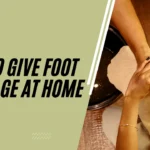Short answer: Yes—massage can reduce pain and muscle tightness around an irritated tendon, making it easier to move and stick with your rehab plan. It works best as supportive care, not a stand-alone cure.
How massage helps
- Eases protective muscle guarding near the tendon (e.g., calves for Achilles, forearm for tennis elbow).
- Improves comfort so you can complete your eccentric/heavy-slow loading exercises.
- Supports blood flow and better tissue glide (myofascial release) around the tendon.
When to use it
- After the very painful “hot” phase settles (first 48–72 hours).
- During ongoing/chronic tendinopathy to manage tightness and soreness.
- As a short warm-up before rehab sessions to improve range of motion.
If your pain also involves stubborn muscle knots, a focused session like Deep Tissue Massage can help. Active clients often pair rehab with Sports Massage to manage training loads; for lighter reset days, a calming Swedish Massage is a good option. Explore all options on our Services page.
Simple way to try it (5–10 minutes)
- Keep pressure gentle to moderate—aim for “good soreness,” never sharp pain.
- Work the surrounding muscles more than the tendon itself.
- Spend 30–60 seconds per spot; breathe slowly and add gentle joint movement after.
- Follow with your prescribed loading/strength exercises for lasting change.
What massage can’t do
- It won’t repair the tendon by itself. Long-term improvement usually needs a structured loading program, activity tweaks, sleep, and time.
Safety first
- Pause and seek guidance if you have sharp or worsening pain, marked swelling/redness/warmth, night pain, or you suspect a tear.
- In early acute flare-ups, emphasize rest and activity modification; add massage later as symptoms allow.
FAQs
1) Does massage help tendonitis?
Yes—massage can reduce pain and muscle tightness around the irritated tendon, making rehab easier. It’s supportive care, not a cure.
2) Which type of massage is best for tendonitis?
For comfort, gentle Swedish or myofascial work is great. For selected chronic cases under guidance, cross-friction or pressure massage may help.
3) Should I massage the tendon directly or the muscles around it?
Start with the surrounding muscles (e.g., calves for Achilles, forearm for tennis elbow). Direct tendon work is usually lighter and added later.
4) Is cross-friction massage safe for tendonitis?
It can be, but use cautiously and typically when pain has settled. If it spikes pain or swelling, stop and consult a professional.
5) Can I massage during an acute flare?
If the area is hot, very tender, red, or swollen, avoid deep work. Use rest/activity tweaks and ice first; add massage once it calms.
6) How often and how long should I massage?
5–10 minutes, 2–3× per week (plus brief self-care on non-irritable days) is plenty. More pressure or time isn’t always better.
7) Should I use ice or heat with massage?
Ice helps early pain and swelling; heat often helps ongoing (chronic) stiffness. Choose what reduces symptoms without increasing soreness.
8) Will massage cure tendonitis?
No. It eases symptoms. Long-term improvement usually needs a structured loading program (eccentric/heavy-slow resistance) over weeks.
9) Are massage guns OK for tendonitis?
Use on nearby muscles only, at low intensity, and avoid pounding directly on a painful tendon. Stop if pain worsens.
10) How long until I feel better?
Many feel short-term relief after a session. Tendons adapt slowly—expect steady progress over 6–12+ weeks with proper loading.






